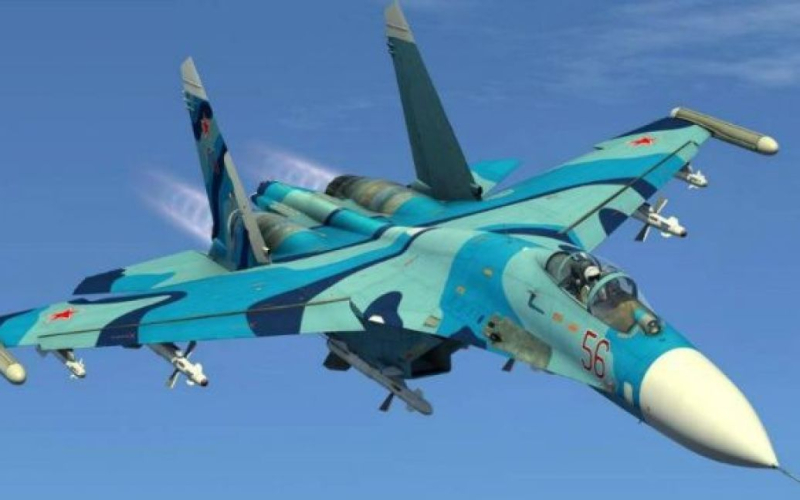Last year, a Russian Su-27 fighter fired two missiles at a British plane. The occupiers reported a technical malfunction, but the world's media claim that this is not true.
A Russian plane last year fired a missile at a British plane because of an order that was misheard or interpreted incorrectly. The pilot fired two missiles, the first of which, fortunately, missed and did not malfunction, as was claimed immediately after the incident.
The BBC writes about the details of the incident.
Russia claimed the incident last September was due to a “technical malfunction.” The UK Ministry of Defense then publicly accepted Russia's explanation. But now three senior Western defense sources have said Russian communications intercepted by an RAF RC-135 Rivet Joint aircraft are very different from the official version.
What happened then?
A British royal aircraft (PAF) was on a surveillance mission over the Black Sea in international airspace on September 29 last year when it collided with two Russian SU-27 fighter jets.
Intercepted communications show that one of the Russian pilots believed that he was allowed to target a British plane after a controversial command from a Russian ground station.
It has now emerged that RAF crew may have listened to an incident that could have led to their deaths. At the same time, the British Ministry of Defense does not make public the details of these messages.
“Our intention has always been to protect the security of our operations, avoid unnecessary escalation and keep the public and international community informed,” the British Ministry of Defense says.
What actually happened?
As two Russian SU-27s approached the Royal Air Force reconnaissance aircraft, they received a message from the ground station controller. One Western source told the BBC that the controller's words were: “You have a target.”
One of the Russian pilots took this ambiguous phrase as permission to fire.
It is noted that such loose formulations indicate a high degree of unprofessionalism of those involved. Fortunately, the Russian pilot fired an air-to-air missile, which launched but failed to home in on its target. It was a pilot error, not a breakdown.
Defense sources told the BBC that there was even an argument between the two Russian pilots. The first believed that he understood everything correctly, and the second was sure that they were not given permission to fire. They say that he swore at his comrade and said that he did not think what he was doing.
And if the first missile did not hit the target, then the second simply fell from the wing, which means either a malfunction of the weapon, or that that the launch was aborted.
How the event is interpreted in Britain
Three weeks later, the British government confirmed the incident. After an explanation from the Russian Ministry of Defense, this was called a “technical malfunction.”
In a statement to parliamentarians on October 20, then Defense Secretary Ben Wallace called it a “potentially dangerous encounter.” But he did accept the Russians' explanation: “We do not consider this incident to be a deliberate escalation on the part of the Russians, and our analysis agrees that it was due to a malfunction.”
How the incident was perceived in the US< /strong>
A secret intelligence leak showed that the US military was talking about the incident in more extreme terms. In a number of documents published online by American pilot Jack Teixera, the incident was described as a “near-shooting.”
“The incident was much more serious than initially portrayed and could have amounted to an act of war,” the publication reports New York Times.
What's the secret?
There may be several reasons why the UK Ministry of Defense did not want to provide full information. Firstly, the UK would not like to make public the extent of intelligence collection and details of intercepted communications.
More importantly, neither side wanted an escalation that could potentially involve a NATO member in a military confrontation with Russia. But the incident once again shows how one mistake and miscalculation by one person can spark a wider conflict.
The Ministry of Defense told the BBC that “the incident is a stark reminder of the potential consequences of Putin's barbaric invasion of Ukraine.” This is not the first time a reckless Russian pilot has targeted a NATO aircraft in international airspace.
In March earlier this year, a Russian aircraft shot down a US unmanned surveillance drone also flying over the Black Sea. The Russian pilot was awarded a medal for the incident, but most experts agree that it was a stroke of luck rather than a result of skill or judgment. This shows serious questions about the discipline and professionalism of the Russian Air Force.
Related topics:
More news

